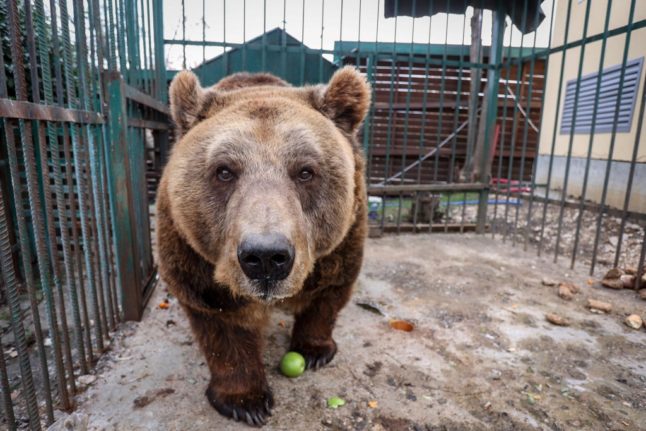After the killing of a jogger by a female bear in early April 2023 in Trentino, Italy, the fear of bear attacks has also increased in Austria. In the country, a different bear has been spotted several times in the Tyrolean region of Lech Valley.
So yes, there are wild bears in Austria.
However, as wildlife biologist Hubert Schatz told broadcaster ORF, Austria is “strictly a migratory country”. This means that there are no native bears that always have their habitat in Austrian forests. Instead, they migrate, particularly during the spring months.
Sightings of bears are, therefore, rare, and when an animal is spotted, it is safely followed by wildlife experts. In spring 2023, the bear roaming around in Lechtal, Tyrol, left numerous tracks, and local authorities recorded his progress through Austrian mountains and forests.
READ ALSO: Why Vienna is a haven for wild animals – and where you can find them
The bear was caught on camera, causing property damage in a rural area while looking for food, and hunters found the remains of a deer it ate. “He just had a hunger”, said district hunter Martin Hosp, reminding people that this behaviour is normal for a large predator and that there are no indications that that particular bear could be a danger to humans.
When an animal is sighted, its residues, such as fur hairs, are sent to Vienna, where experts start a DNA investigation to learn if it’s male or female and from which line – the goal is to check whether it comes from a particular “aggressive” family, with a history of attacking humans.
Sightings in Vorarlberg
According to Austrian media, there have also been alleged sightings of bears in Vorarlberg. Two people reported seeing two bears, a larger and a smaller one, near Gortipohl while they were walking their dogs. They allegedly “roared” before stepping into the dense forest.
There are no photos or videos, but authorities and official hunters were called for a search. They found imprints of an animal but could not clearly assign them to a bear or not.
Wildlife biologist Hubert Schatz said he had “a certain scepticism” of the story, though he wouldn’t rule out the possibility of bears in the region.
READ ALSO: EXPLAINED: Will Austria ban horse-drawn carriages?
He said: “What makes me very suspicious is that they’re talking about two bears, one big and one small. A single bear – that would be quite possible now. At this time of year, young male animals like to be on the move.”
However, he said that it’s too early to have been a young one from this year and one bear born last year would likely no longer be travelling with its mother.
How common are bear sightings in Austria?
In Austria, there are currently bears only in the Karawanken, Carnic Alps and Gailtal Alps in Carinthia and East Tyrol, according to WWF. However, as mentioned, those are mainly migrating individuals from the Slovenian population, but males from Trentino in Italy have also been recorded in the country.
They are estimated to be between five and eight male brown bears.
The Austrian bear population, which developed from the specimens released during a reintroduction project and the “Ötscherbär”, which migrated independently in 1972, has been extinct since 2011 in Austria, the NGO said.
READ ALSO: ‘Problem animals’: Why are wolves disappearing across Austria?
Sporadically, bears have appeared in other areas in recent years. For example, in 2008, a migrating bear reached Tyrol and became the first brown bear to winter in this region in 100 years.
In spring 2012, Trentino bears named ‘M12’ and ‘M13’ made headlines, also in Tyrol. ‘KJ2G2’, a six-year-old bear also from Trentino and already detected in East Tyrol, Carinthia, and Friuli, migrated into the core area of the former Lower Austrian Ötscher bear population in April 2012 before making its way back and disappearing again near Donnersbachwald, in Styria.



 Please whitelist us to continue reading.
Please whitelist us to continue reading.
Member comments